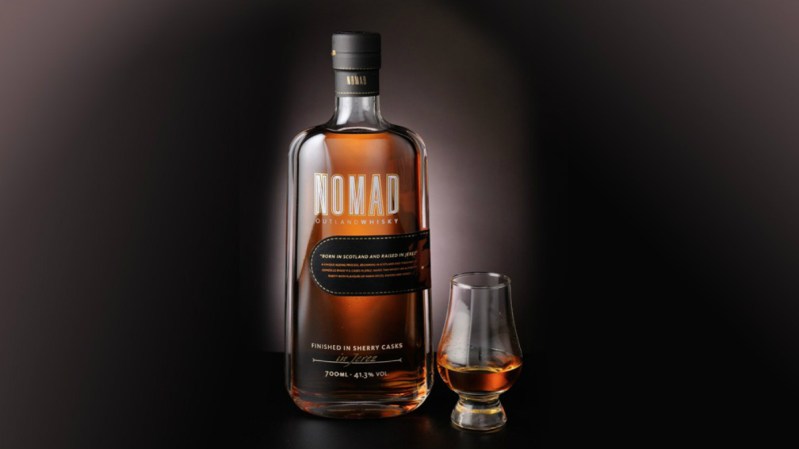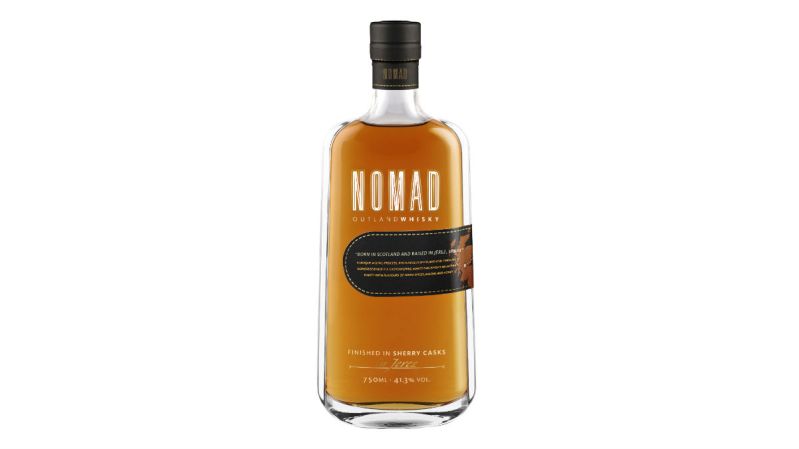
If you like the popularity of sherry-finished Scotch whiskies and the trend for forward-thinking blends from Scotland (think Monkey Shoulder and Sheep Dip), let us introduce you to Nomad Outland Whisky.
Most Scotch whiskies are aged in barrels that previously held bourbon for several years, imparting hints of vanilla, caramel, and a light nutty sweetness. But a few are either finished or wholly aged in ex-sherry casks, bringing the herbaceous spice notes of European oak and the dried fruit sweetness of Spanish sherry (along with, sometimes, a ruby tinge to whisky’s traditional amber color). Depending on whether the original sherry was Oloroso, Pedro Ximénez, Fino, or Manzanilla brings additional character to the finished whisky.
More Whiskey Guides
One of the challenges? Whereas bourbon barrels can be dried out, dismantled, and shipped off to the land of golf and kilts to be reused, the sherry barrels work best when they’re still dripping wet. Often a little bit of sherry is left in the barrel to keep it soaked during the journey, and dumped before the whisky is poured in. En route, that juice can dry out or sour, and barrels can be damaged or face other issues. González Byass, a top sherry producer and provider of barrels to Scotland, decided to take out several middlemen and bring the whisky to Spain.
Technically, it’s not Scotch whiskey
Not technically a Scotch whisky (since the final barrel aging and bottling takes place outside of Scotland), Nomad Outland is a blend of around 30 malt and grain whiskies from the Speyside region of Scotland (where Macallan, The Glenlivet, Aberlour and other classics are based). They age in ex-bourbon casks in northern Scotland between two and five years, then transfer to ex-Oloroso sherry casks for three more years. And then the blend travels to Jerez, Spain (sherry’s ancestral home) to rest another year in very freshly seasoned ex-Pedro Ximénez casks in the Nomad cellars of the González Byass wineries.
It’s not just the soaking wet freshness of the recently dumped sherry that adds magic to the juice — Spain’s increased heat and humidity means the whisky is spending more time getting absorbed into and influenced by the sherry-soaked oak than it does in chilly Scotland.
The whisky has some serious cred: González Byass has worked for about 100 years with luxury single malt brand The Dalmore (and other Whyte and MacKay brands) and, for many years, its current master blender Richard “The Nose” Paterson.
“Richard comes to Jerez at least once a year to check on his casks and taste any gems our master blender Antonio Flores has to offer him,” says brand ambassador Alvaro Plata. “On one of these visits, following a long, relaxing typical Spanish lunch, Antonio and Richard got to talking about the possibility of aging whisky in Jerez.”
The result is a rich, almost sweet blended whisky that has a warmth and complexity unlike anything else out there. It’s practically a cocktail in a glass.
Oh, and the name? We’d like to think at least someone at Nomad has seen or read Outlander and was influenced by its awesomeness. Sadly, that’s not the case. “It’s ‘Nomad’ for the fact that the whisky is neither a Scotch nor a Spanish whisky,” says Plata. “‘Outland’ was chosen as it refers to a whisky made in a non-traditional whisky country. An international, mysterious land in the eyes of whisky.”

Appearance: The whisky is a deep golden brown with just a hint of a ruby note.
Nose: The aroma is warm but not hot or in your face, emphasizing oak, malted grain, and just a hint of dried raisin and fresh bread toward the end. Here the sherry influences are subtle but inviting.
Palate: Towards the front there is a bright spiced honey which moves into a medium weight fruit-and-nut medley with unexpected sweetness.
Finish: The sweet fruit and honey notes refine as you swallow, providing a long, chewy vanilla/oak/raisin finish and just a faint hint of smoke. The overall mouth feel is a smooth, medium- to full-bodied whisky with both a surprising brightness and surprising sweetness.
Final Thoughts: In discussing this whisky with fellow boozehounds, I find it’s a sort of love-it-or-hate-it product. Scotch whisky purists might have a hard time breaking tradition for this decidedly sweeter product, but as Plata points out, they also know that Paterson wouldn’t stick his nose into a project that doesn’t taste good. Meanwhile, drinkers who who find the heavy peat smoke of Islay whiskies or even heather-and-honey softness of Speyside styles to be hard to drink, this might be a good entry into blended Scotch whiskies (even though we should stress it’s not technically a Scotch). While Monkey Shoulder might be a lighter weight whisky, newcomers should not be afraid to try this quite delicious entry.
The combination of the rich, sweet sherry influences and the spice-and-honey notes from the oak aging give the impression not unlike sipping a Manhattan or perhaps some sort of whisky liqueur. The slight bite of spice and smoke means this whisky also pairs beautifully with dark, full-bodied cigars.


